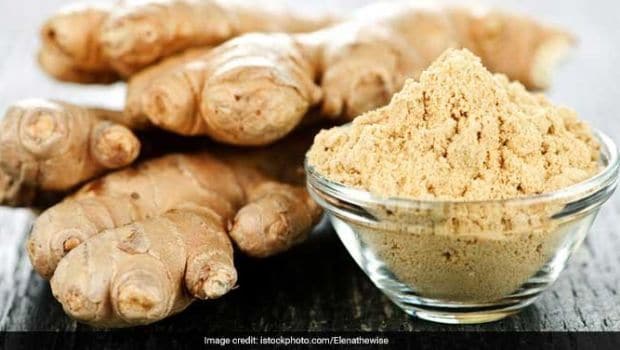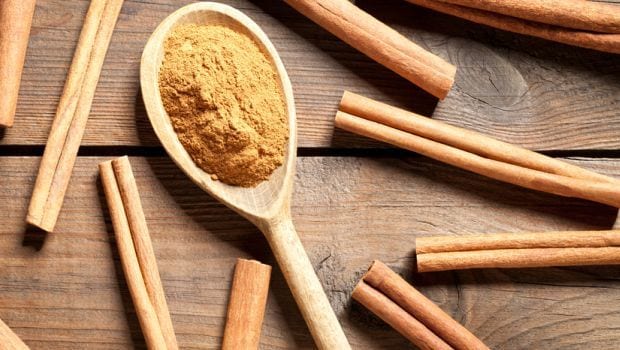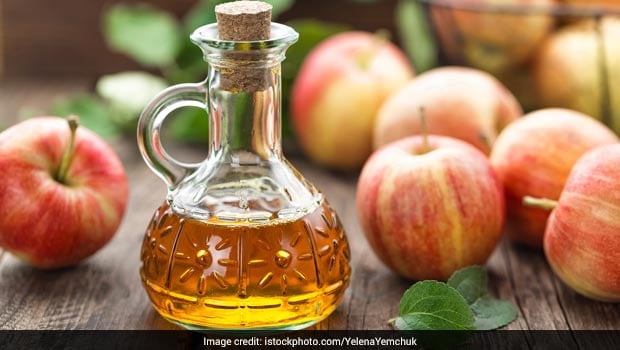10 Best Home Remedies For Headache Due To Cold Weather
Do you want to know what are the best home remedies for headaches due to cold weather? At some point, we all feel the effects of the stresses of daily life, such as time constraints, annoying coworkers, inadequate rest, and gridlocked roads. Once that happens, even our favorite cup of coffee can’t save us from the pounding heads we’ll have.
The worst part of a bad day? Getting a migraine. It’s typical to resort to quick fixes like painkillers, acupressure, and chamomile tea.
In fact, we’ll do almost anything to get rid of the throbbing in our skulls. Thank goodness, we have compiled a list of 10 tried-and-true natural home remedies that are sure to put an end to that throbbing headache.
If you have a headache and have been hunting for a solution, your search is done. In this article, we’ll go over some of the most typical headache triggers, as well as several home remedies that may help alleviate the pain.
Natural treatments provide a drug-free alternative for alleviating headache pain. Headaches can be prevented or their severity lessened with the help of these at-home treatments.
Table of Contents
10 Best Home Remedies For Headaches Due To Cold Weather
In contrast to tension headaches, which are often accompanied with a tightening feeling in the neck, shoulders, and scalp, migraines are characterized by pulsating pain, commonly on one side of the head.
Internal medicine expert Dr. Supriya Bali of Max Health Care notes that “migraine symptoms may vary from person to person, and even within the same person.
To prevent headaches, avoid foods and drinks that include aspartame, MSG (monosodium glutamate), caffeine, alcohol, phenylethylamine (found in chocolate and cheese), tyramine (found in nuts, fermented meats, and soy), and so on.
If you’re starting to get a headache, turn off the electronics. If you suffer from migraines, it’s crucial to maintain steady blood sugar levels by eating healthily at regular intervals.
Try to get in a workout at least three times a week for 30 minutes each time. Always make sure you’re getting enough water in your diet.
1. Ginger, The All-Rounder
Since ancient times, people have turned to the usage of Rounder Ginger as a traditional remedy to help relieve the discomfort associated with headaches. The pain is significantly alleviated as a result of the reduction in inflammation in the blood vessels of the head.
The stimulation of the digestive system is an extra benefit that helps alleviate the nausea that is often accompanied by headaches.

Curious about the amazing chemical’s potential use in the treatment of headaches in the comfort of one’s own home? Have a cup of tea prepared from ginger root, or blend ginger juice with lemon juice in a ratio of one part ginger juice to two parts lemon juice. The dose that is advised is either once or twice a day.
When applied to the forehead and left there for a few minutes, a paste that is created from ginger powder and two tablespoons of water has the potential to have the same results.
2. Relieve Pain with FragrancePeppermint Oil:
The invigorating scent of peppermint has been shown to increase blood flow, which may help alleviate headaches brought on by blood vessel constriction. Because it contains menthol, it is beneficial for the treatment of hypertension.
In an atmosphere that is dark and calm, take several deep sniffs of the aroma. A combination of one tablespoon of almond oil and three drops of peppermint oil may also be massaged into the temples and the nape of the neck.
Instead, you may try rubbing peppermint leaves that have been crushed over your forehead. A revitalising cup of herbal tea may be made by steeping one teaspoon of dried peppermint in one cup of water that has been brought to a boil.
Cover and let the tea steep for at least ten minutes for the best possible outcomes. Sift, then add honey for a finishing touch.
Don’t be in a hurry to finish your cup of tea.
Not only does the aroma of lavender oil smell wonderful, but it also helps relieve headache pain quite effectively. Placing a few drops of lavender essential oil on a tissue and inhaling it in order to appreciate its relaxing scent is as simple as putting a few drops of the oil on a tissue.
You may also use lavender oil to create a steam bath by adding two drops to two cups of boiling water, allowing the water to cool, and then inhaling the vapours that are produced. Alternately, you may try massaging your forehead with a combination that consists of one tablespoon of almond oil or olive oil combined with two or three drops of neroli essential oil.
“Drawing a foot bath with lavender oil and peppermint,” as recommended by Dr. Manoj K. Ahuja of the Healing Touch Hospital, is recommended because the hot water improves circulation to the feet and the aroma relaxes the mind.
Lavender oil should not be swallowed.
3. Would You Like Some Cinnamon?
The application of cinnamon, sometimes known as the “miracle spice,” is one of the most well-known and successful therapies for headaches. Having trouble figuring out how to put it to use?

Regarding this, please refer to: When combined with water, ground cinnamon may be used to make a thick paste. Simply apply some to your temples and forehead, and then try to catch some shut-eye for the next half an hour. After that, wash it off with some warm water.
4. Prioritize Your Use of Thyme
Applying one or two drops of essential oil derived from thyme or rosemary to your temples and forehead may help to alleviate the excruciating throbbing pain. After applying it lightly with a light touch to freshly cleaned skin, you may kick back and relax for a few minutes while the treatment takes action. We are hoping that you will be grateful to us in the future.
5. The Most Primitive Stretches
A number of simple stretches that target the head and the neck may help decrease headache pain. Bend your head to the left and right, then roll your chin up and down, and repeat the motion with your chin. Finally, bend your neck to the front and back.

If you’re having difficulties loosening the tension in your shoulders and neck, try turning your head both clockwise and counterclockwise in a slow, gentle motion. As a result, you won’t be caught off guard when you get a headache.
6. Should We Turn the Heat Up or Turn Down?
Those who suffer from migraines may get relief from their symptoms by putting an ice pack on the back of their neck. The cold helps reduce inflammation, which is one of the primary triggers of migraines. It does this by reducing the intensity of the experience of pain.
Also, if you really want to get rid of a headache, try soaking your feet in some hot water for a bit. This can help relax your muscles and relieve tension. If you’re suffering from a severe headache, mix some hot mustard powder with some water and drink it.
“Another option is to place a washcloth over your head and then hold it over a hot sink or the shower for five minutes. This will bring the temperature to the level you wish. It is recommended by Dr. Ahuja that the processes be repeated many times.
7. Going Nuts over Cloves
Cloves have been shown to be effective in the treatment of throbbing headaches due to their ability to soothe pain and provide a cooling effect. Place a few of cloves in a sachet or a clean handkerchief, then lightly mash them up with your fingers.
You could try crushing some cloves and inhaling their odour whenever you get a headache.
Your temples and forehead will benefit from a massage using a combination that consists of one tablespoon of coconut oil, a sprinkle of sea salt, and two drops of clove oil that has been mixed together.
8. The Best Ingredient Is Basil
An aromatic herb that has several functions as analgesic, particularly for the treatment of headaches in a natural way. The massage oil has a sedative effect on the muscles, which may help alleviate headaches caused by muscular tension.

Put three or four fresh basil leaves into a cup of water that is boiling, then reduce the heat to keep it at a simmer for a few minutes. Add some honey to the tea, and make sure to relish each and every sip of it. You might also try breathing in the vapour that is produced when fresh basil leaves are boiled.
9. Eating an apple every day will keep the doctor away
Apples and vinegar made from apple cider both have the ability to alleviate migraine symptoms. They are helpful in restoring the body to its natural acid-alkaline balance, which is essential for optimal health.
Apple cider vinegar and water should be mixed together in a saucepan that has a lid, and then the mixture should be heated to a boil. Remove it from the fire, place a towel over your head, and inhale the steam while it’s still hot.
Patients who suffer from sinus headaches would have rapid relief as a result of this, according to Dr. Supriya Bali of Max Health Care.

Eat an apple with some salt on it in the morning if you have a headache, and then wash it down with some warm water when you’ve finished eating it.
Alternately, you might take a glass of water and add two teaspoons of apple cider vinegar, one teaspoon of honey, and a few drops of lemon juice to the mixture. Consume it two or three times each day.
10. The Influence of Preventative Measures
Do you believe that assuming a camel position can provide relief for the pounding in your brain? It is correct that the physical postures, breathing practises, and meditation that are components of yoga help to achieve maximum relaxation.
You’ll feel more relaxed as a result of your blood flowing more freely, your muscles being stretched, and your thoughts being more focused. It is advisable to take preventative steps, such as regularly practising yoga, rather than corrective procedures.
To properly fill your lungs, it is recommended that you concentrate on taking long, slow breaths from your diaphragm. Because of this, the quantity of oxygen that is present in your blood will rise, and as a result, you will have less anxiety as a result of this.
The Link Between Headaches And Winters
Variations in air (barometric) pressure brought on by colder temperatures and less time spent in the sun during winter are linked to an increase in the number of people who have headaches during this season.
Alterations to the hemodynamic system, often known as the internal blood pressure mechanism, may produce pressure oscillations throughout the body, which can lead to headaches and migraines.
Because cold temperatures cause blood vessels and neurons in the brain to contract, they may also be the cause of headaches.

The frontal bone of the skull contains a number of openings known as sinuses. They have been air-pressed entirely and are in perfect harmony with the surrounding air pressure. It is essential to maintain this balance, which may be thrown off by even slight shifts in air pressure, resulting in a dreadful headache. This equilibrium can be thrown off by even little shifts in air pressure.
Alterations in the length of the days may also play a role in the onset of seasonal headaches, according to the opinions of experts.
When winter arrives, the days get shorter while the duration of the night increases. There is a good chance that upsetting the body’s natural cycle of sleep and wakefulness might cause headaches to occur more often.
Preventing Headaches In The Winter Season
When it comes to avoiding headaches throughout the winter, here are a few basic recommendations to keep in mind:
- On chilly days, protect your exposed face and neck by wrapping a hat and scarf over your head and neck.
- Relaxing the muscles in your shoulders and neck can help increase the circulation in those areas. Are you feeling tense? You may unwind by gently massaging your neck, stretching out your muscles, and doing slow, circular motions with your head, shoulders, and arms.
- Every night, you should aim to sleep for at least eight consecutive hours. Keeping the same schedule for when you go to bed and when you get up each day will also assist you in developing healthy habits.
- It is recommended that a radiator be used in order to maintain a comfortable temperature. You are free to make use of a humidifier at any time in the event that you consider the level of humidity in your room is inadequate.
- If you want to avoid becoming sick with a cold or the flu during winter, you should take a steam bath at least twice a day.
- There are numerous wonderful instruments for massaging the face available, some of which are jade rollers and gua sha.
- One theory suggests that doing so may facilitate the outflow of mucus from the nasal passages and prevent headaches from occurring.
- If you want to avoid the headaches that might arise from skipping meals, be sure to take each of the three meals at the appropriate intervals. It is vital to have a diet that is well-balanced in order to prevent vitamin deficits.
- It is essential to be active in order to keep one’s body warm and the blood circulating in order to maintain one’s circulation going. Even if you don’t feel like getting out of bed, even a small bit of activity during the cold months may help prevent headaches from occurring as often.
- Take a relaxing hot shower or soak in a warm bath to soothe sore muscles and keep your body warm. Check that the temperature isn’t too high in there, and if it is, try not to spend too much time inside, since doing so might leave you vulnerable to the cold.
- In the winter, you may not feel as if you are particularly thirsty, but you should still be sure to drink enough water. Drink plenty of water to keep your fluid levels up.
- Drinking something hot to keep warm, like ginger tea or a latte with turmeric, is a good idea.
- It is essential that you see a medical professional in order to get the most effective treatment for your headaches. Avoiding migraine triggers is very necessary if you get headaches throughout the winter months.
